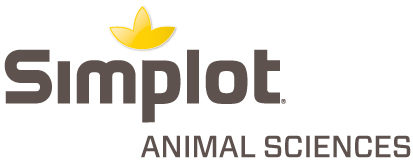As concerns over falling reproductive performance escalated around the turn of the century, dairy cattle breeders and advisers decided to take on this trend by putting more emphasis on reproduction-related genetic traits (e.g., Daughter Pregnancy Rate [DPR] and Sire Conception Rate [SCR]) and seeking out effective heat detection tools.
Today, many real-time tools are available, but continued focus is needed to learn how to use data and implement reproductive management changes with guidance from advisers.
If visual heat detection is a challenge on your dairy operation, it’s time to take a closer look at heat detection technologies that monitor cattle activity, motion and behavior. Examples of devices used to indicate the cow was mounted include heat patches, tail paint and tail chalk, which are relatively simple and inexpensive.
Outside North America, some researchers have monitored vaginal electrical resistance. Decreased electrical resistance is detected when cows and heifers are in estrus. This tool has been used mostly in research applications.
Milking equipment manufacturers and other dairy industry vendors offer a variety of activity systems. These activity monitors focus on measuring increased cow activity in comparison with normal baseline or expected activity. Increased activity is associated with a risk of being in estrus.
Beyond activity monitoring systems and milk samples (collected via in-line systems), dairy producers can assess various physiological measures. These assessments can start right after freshening and are used in conjunction with physical health measurements (e.g., milk progesterone and beta-hydroxy butyrate [BHB] analysis) and real-time heat detection data for analysis to better manage individual cows.
Tools to diagnose pregnant cows
Historically, manual transrectal palpation was conducted to diagnose pregnancy. This technique can be time-consuming and “cost time” (day 32 post-insemination is the earliest) in a cow’s reproductive cycle. Transrectal ultrasonography surfaced more than two decades ago.
Highly skilled technicians can detect pregnancy at day 25 post-insemination. Progesterone testing can now be done on-farm in real time via in-line milk sampling. Sampling time is based on using a bio-model that predicts the cow’s risk for ovulation. Pregnancy-associated glycoproteins tests look for the presence of maternal pregnancy-associated glycoproteins to confirm pregnancy with a 98.5 percent sensitivity.
Technology is also coming available for an in-line milk sampling laboratory that tests milk for components. This system looks for lactate dehydrogenase, BHB and progesterone. Lactate dehydrogenase is a milk enzyme and is an indicator of udder inflammation and infection. BHB reflects the daily risk of ketosis. Progesterone can assess the estrus cycle stage.
While confirming pregnancy is a key component to reproduction management programs, dairy producers also need to find open cows for enrollment in resynchronization programs or determine if further action is needed. Transrectal ultrasonography of cows 28 to 35 days after insemination finds cows that failed to conceive or experienced early embryonic loss up until this time.
However, further losses are common on all dairy farms; therefore, a follow-up exam at 42 to 66 days after insemination finds abortions, fetal gender or twins. Activity systems help find 21- to 24-day repeats as well as detect early embryonic losses or abortions after an initial positive pregnancy diagnosis.
Like pregnancy diagnostic tools, progesterone (via blood or milk) and pregnancy-associated glycoproteins test results can be used for pregnancy status (positive, negative or suspicious) on that day. When test results yield “suspicious status,” recheck with a new sample or palpate the cow.
Smooth transition period helps cows conceive
How do you set up cows for reproductive success? Gather data so you know each cow’s status. For example, monitor body condition. Rapid weight loss can impair health and ultimately impede conception/pregnancy (e.g., more anovulation and possibly poorer-quality oocytes). Keep in mind healthy dry and transition periods help set up cows for reproductive success.
It is recommended cows calve at 3.0 body condition score (BCS) and heifers at 3.25 to minimize BCS-related health disorders at calving. Recent data indicated even lower BCS might be beneficial. Researchers summarized how BCS is related to health disorders. Any negative event at calving and up until 60 days in milk has been associated with decreased conception risk.
If health prevention tools failed, the next best health management strategy is typically early intervention. Increases in non-esterified fatty acid and BHB concentrations are associated with decreased dry matter intake and metritis. Body condition influences reproductive health.
Simultaneously monitoring non-esterified fatty acids/BHB in relation to BCS should be an integral part of a dairy producer’s strategy. With automated/in-line technology, data are gathered and presented in reports. Work with your advisers on how to use these reports for a strategic reproductive program.
In conclusion, tools to monitor cow health in the transition period, before breeding, in addition to tools to detect abnormal cows are tools of the future. Quality dairy producers want to minimize the number of abnormal cows. However, when they do have them, they should demand the tool allow them to intervene early.
If the cow fails to respond, then it is a prospective cull. Implement management strategies so more than 80 percent of cows at the end of the voluntary waiting period are cyclic and fertile, at least 70 percent of cows are pregnant by day 150, involuntary culls (non-replacements) are less than 20 percent and, of this 20 percent, less than 50 percent should be reproductive culls. ![]()
PHOTO: Activity and rumination monitors are just one method by which dairy farmers can capture data that, in turn, can be translated into management decisions for the individual cow. Photo provided by DeLaval.
References omitted but available upon request. Click here to email an editor.

-
Nancy Charlton
- Dairy Management Adviser – Automated Milking Solutions
- DeLaval North America
- Email Nancy Charlton
Reproductive Management Goals
- More than 80 percent of cows are cyclic and fertile at the end of the voluntary waiting period.
- At least 70 percent of cows are pregnant by day 150.
- Involuntary culls (non-replacements) are less than 20 percent, and of this 20 percent, less than 50 percent should be reproductive culls.





